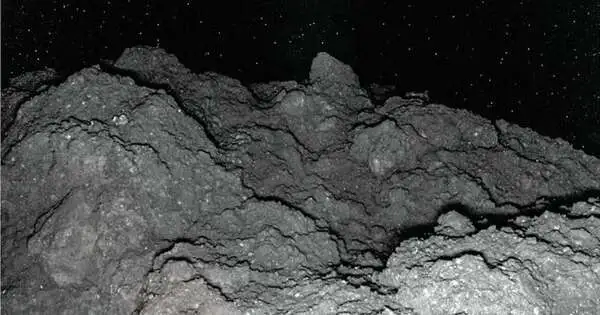What gave rise to life? The answer to this question gets right to the heart of why we are here on Earth.
Did organic compounds simply react chemically to form life in a primordial soup left over from Earth’s collision with space debris? Where did the organic compounds originate, if so?
It’s possible that the so-called “building blocks of life” were quite common in the beginning of the Solar System.
Uracil, one of the five essential bases of the RNA and DNA molecules that are essential to life as we know it, was discovered after samples taken from the asteroid Ryugu in 2018 by the Hayabusa2 mission were analyzed by a team of Japanese and American scientists led by Yasuhiro Oba. Nature Communications published their study on March 21.
Building blocks
At its most fundamental level, the formation of life begins with the combination of straightforward organic molecules into increasingly complex compounds that are able to take part in the numerous reactions that are characteristic of a living organism.
It is believed that simple amino acids serve as the building blocks for these more complex molecules. However, this is not simply a game of random combinations.
249 million base pairs, or rungs on the twisted ladder of the DNA molecule, make up chromosome 1, the largest “chunk” of the human genome. Two bases make up each base pair: either cytosine and guanine or thymine and adenine.
It takes a lot of work to go from simple chemicals for base pairs to a complete DNA strand. A strand of DNA also has a unique, intricate structure that varies from person to person. DNA’s structure is used by life on Earth to remember the structure of the organism in question.
A molecule known as RNA is used by life inside cells to make proteins and perform other random tasks in addition to DNA. Additionally, a long string of bases makes up RNA: like DNA, it has guanine, cytosine, and adenine, but instead of thymine, it has uracil, which is what was found in Ryugu’s sample.
Ryugu
Ryugu is an asteroid of the C type, or carbonaceous type. In the asteroid belt, these are the most common type, accounting for approximately 75% of the asteroids that can be observed.
The Hayabusa2 mission established that carbonaceous chondrites, a rare meteorite that occasionally occurs on Earth, originate from C-type asteroids like Ryugu.
These meteorites previously contained uracil and other organic molecules; however, the possibility that some of the molecules originated on Earth cannot be ruled out. The chemistry of the meteorite samples could have been altered by heating as they passed through the atmosphere, or they could have been contaminated here on Earth.
However, because the Ryugu sample was brought back to Earth in a tightly sealed container after being extracted from an asteroid’s surface, researchers are confident that it has not been tainted in any way.
Additionally, Ryugu’s presence of these amino acids demonstrates that organic molecules can survive transport through the solar system, even on the surfaces of asteroid bodies that are subjected to solar wind, micrometeorites, and cosmic rays.
Ryugu samples already contain a wide variety of organic compounds.
There are two types of many organic molecules, such as amino acids: both right-handed and left-handed. Although both left-handed and right-handed amino acids are prevalent in Ryugu samples, this suggests that the molecules found there are not signs of life.
The big picture:
A molecular dust cloud that was bombarded by protons and UV radiation as well as particles formed the Solar System around 4.57 billion years ago.
Simple molecules like methane (CH4), water (H2O), and ammonia (NH3) were in the molecular cloud. The radiation would have broken them down into smaller pieces, which would then have been reassembled into more complex molecules like amino acids.
It is thought that C-type asteroids like Ryugu formed so far away from the Sun that the water and carbon dioxide they contain would have frozen. However, liquid water would have been able to react with the rocks and minerals as the asteroids warmed up and the ice melted.
It is unclear whether these conditions resulted in the formation of more complex organic molecules; however, it is clear that they would be favorable to further reactions. Additionally, the survival of various compounds may be affected by these conditions.
The Hayabusa2 samples from Ryugu provide a fresh perspective on the origin of organic compounds, which may have been the beginning of life on Earth. It’s still a long way from the time when these organic compounds were available on early Earth and life began.
Journal information: Nature Communications





